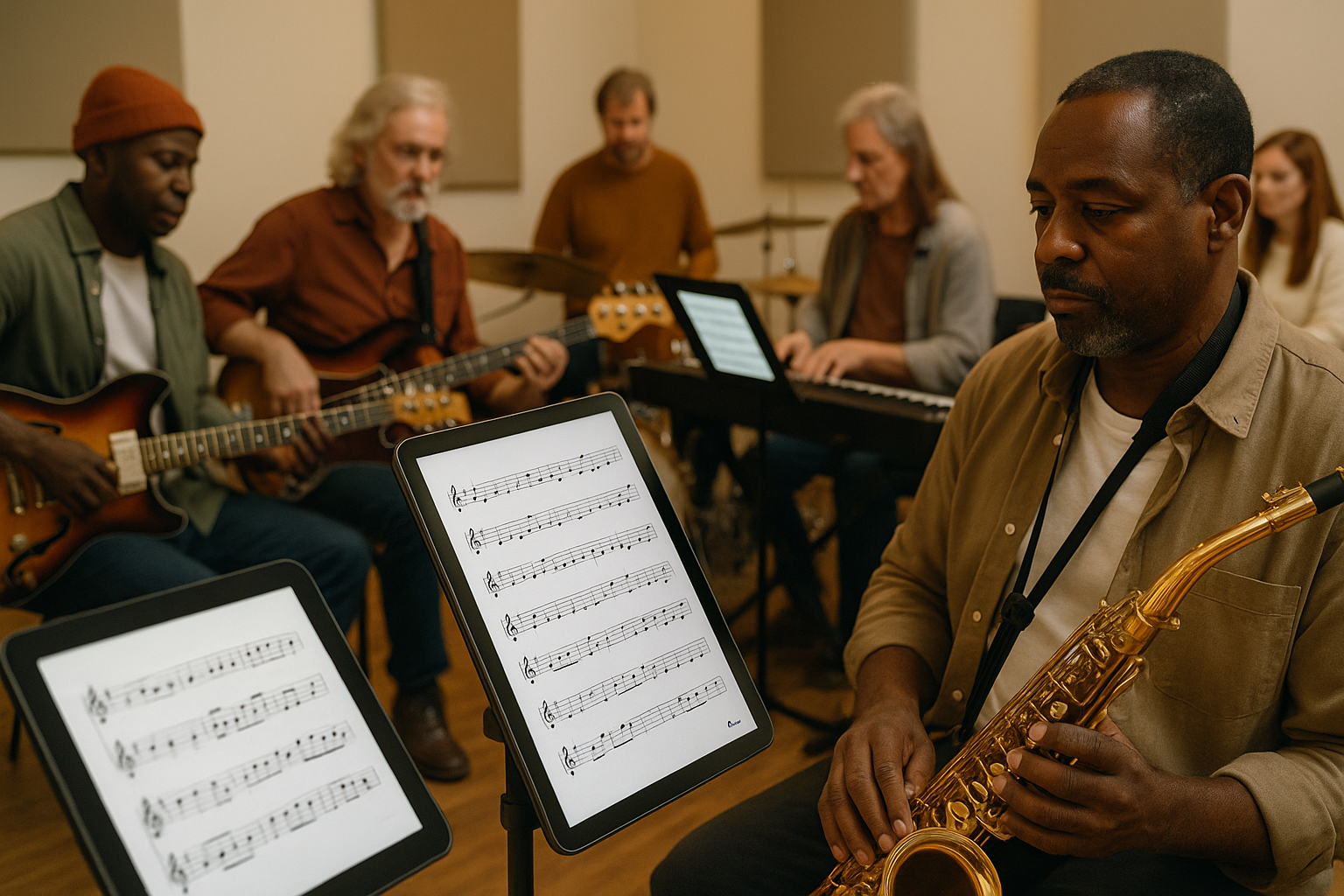From Parchment to Pixels: The New Era of Digital Sheet Music

Imagine Beethoven’s world—where ink, paper, and candlelight shaped masterpieces. Now, fast-forward to today: digital screens have revolutionized how musicians interact with sheet music. At the heart of this transformation lies the large-screen tablet—a tool redefining functionality, experience, and professionalism for modern performers.
Why Go Big? Core Advantages in Vision and Functionality
-
Unmatched Visual Clarity
-
Minimal Zooming and Scrolling: With screens close to the standard A4 size, most sheet music can be displayed in full-page view, reducing distractions during performances.
-
Clearer Details: Intricate ornaments, complex modern notation, and dense orchestral scores become effortlessly readable on high-resolution displays, easing eye strain.
-
-
Preserving the Composer’s Intent
-
Authentic Layouts: Large screens faithfully replicate the spacing, pagination, and formatting of printed scores—essential for interpreting phrasing and musical structure.
-
Two-Page View: For pianists and others, landscape mode recreates the “spread” of an open scorebook, maintaining visual continuity.
-
-
Ergonomic Reading Experience
-
Natural Viewing Distance: Musicians can maintain a relaxed, natural posture, mirroring the distance used for reading physical scores.
-
Universal Stand Compatibility: Tablets 14 inches and larger fit securely on most standard music stands.
-
Empowering Professional Music Workflows
-
Revolutionary Annotation ToolsAmple Marking Space: A larger canvas allows precise, uncrowded annotations—fingerings, bowings, breath marks—with a stylus.
Layered Editing: Create color-coded annotation layers (e.g., personal notes, conductor’s cues, version comparisons) and toggle visibility as needed.
-
Seamless Page Turns and NavigationHands-Free Page Turning: Bluetooth pedals enable uninterrupted performances.
Smart Navigation: Set loops for repeated passages or create custom jumps for longer works like concertos.
-
Enhanced Collaboration and TeachingReal-Time Sync: In ensembles or chamber groups, annotations from conductors or section leaders instantly update across all players’ devices.Remote Lessons: Teachers can guide students via screen sharing, adding live annotations and demonstrations directly to the score.
Key Use Cases in Depth
-
Soloists and PianistsPortable Library: Carry an entire season’s repertoire on one device.
Version Comparison: Use split-screen mode to study different Urtext or edited editions side by side.
-
Orchestral Musicians and ConductorsScore Reading: Conductors mark up digital scores during rehearsals and export notes to musicians.
Instant Search: Locate specific movements or rehearsal marks in vast libraries within seconds.
-
Educators and StudentsInteractive Materials: Embed audio/video examples into scores for multimedia learning.
Assignment Workflow: Students submit video recordings, and teachers provide feedback directly on digital sheets.
7 Trusted Benefits of Large-Screen Digital Scores
Fluidity: Eliminate physical page turns to maintain musical flow.
Weightless Library: Replace kilograms of paper with one lightweight device.
Dynamic Annotations: Edit, save, and erase markings effortlessly—no more stubborn pencil smudges.
Organizational Power: Categorize scores by project, composer, or genre with ease.
Collaborative Workflows: Share and update rehearsal notes in real time.
Eco-Conscious: Significantly reduce paper waste.
Timeless Archives: Digital storage prevents deterioration, loss, or damage.
Conclusion: Toward a Smarter, More Focused Musical Future
Large-screen tablets aren’t meant to replace artistry—they’re designed to remove technical barriers (like awkward page turns, cluttered annotations, or heavy scores) so musicians can focus on what truly matters: the music. This is an investment in artistic concentration.
Practical Tips for Professionals:
-
Prioritize Display Quality: Resolution, contrast, and color accuracy matter most.
-
Essential Accessories: A high-quality stylus (check pressure sensitivity and grip) and a Bluetooth page-turn pedal are non-negotiable.
-
Test Ergonomics: Evaluate the device’s weight and grip to ensure comfort during long practice sessions.
When technology meets art, its ultimate purpose is to serve creativity. As a standout tool of our time, large-screen tablets empower musicians worldwide to communicate timeless emotion and thought with greater efficiency, precision, and engagement.